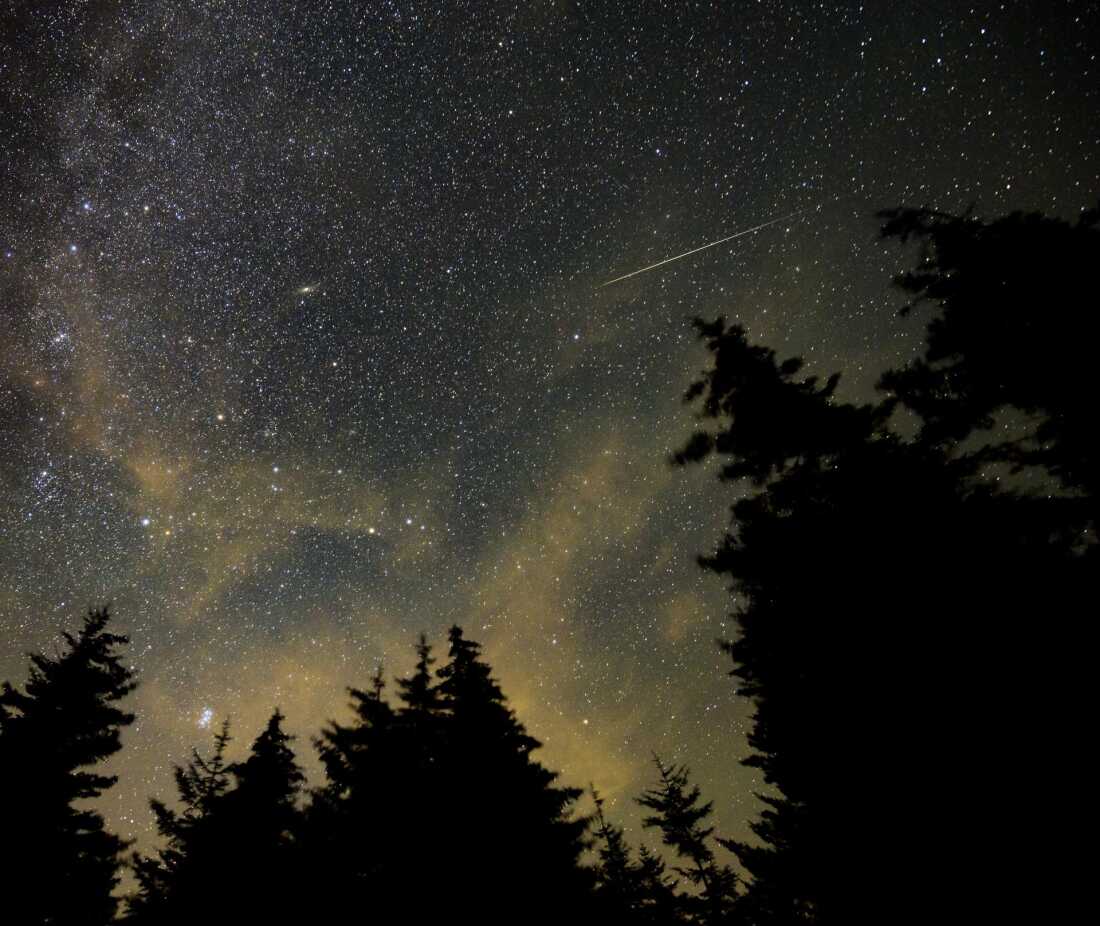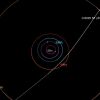
A meteor streaks throughout the sky in the course of the 2021 Perseid meteor bathe.
Invoice Ingalls/NASA
disguise caption
toggle caption
Invoice Ingalls/NASA
A ritual of summer time is gazing up on the night time sky within the hopes of seeing meteors, often known as capturing stars, flash throughout the night time sky. Whereas the annual Perseid meteor bathe often will get probably the most consideration, a greater wager is likely to be a few less-famous meteor showers that can peak on Tuesday night time.
That is as a result of this yr, the brilliant moon could wash out the very best a part of the Perseids, which peaks on August twelfth. The moon can be a few days previous full, which “simply ruins the power to see all of these meteors,” says Nick Moskovitz, a planetary astronomer with the Lowell Observatory in Arizona.
“The glare of the moon can be a killer,” he says, “and that’s simply going to make the Perseids not all that compelling this yr.”
However the moon can be solely about 25 % full this week, when two meteor showers generally known as the Southern Delta Aquariids and the Alpha Capricornids attain their peak on the night time of July 29 going into July thirtieth.
Collectively, these two less-significant meteor showers would possibly produce as much as 20 to 30 meteors per hour, says Moskovitz.
Meteor showers happen when the orbiting Earth plows by means of a bunch of particles left behind by a comet or asteroid that is additionally orbiting the solar. When tiny bits of rock hit our planet’s ambiance, the friction produces a shiny flash of sunshine.
“It’d appear like this massive shiny streak throughout the sky, however these capturing stars are coming from bits of particles as small as items of mud, grains of sand,” says Hunter Miller, an astronomy educator with the Adler Planetarium in Chicago.
The very best viewing can be within the early hours of the morning, after midnight and earlier than daybreak, says Moskovitz, including that it is advisable to discover darkish skies that are not affected by synthetic mild — and keep away from the sunshine sources we convey with us.
“Put your cellphone down,” he says. “Flip that display screen off and let your eyes alter to the darkish.” It might take your eyes wherever from 15 to half-hour to get adjusted sufficient to see dim, fleeting meteors.
To watch the Southern Delta Aquariids, says Moskovitz, folks in North America ought to place themselves in order that they’ve an unobstructed view of the southern a part of the sky.
The Alpha Capricornids do not produce frequent meteors, he says, “however after they do present up, they’re these form of gradual fireballs throughout the sky. So in case you are in search of that one spectacular occasion to occur throughout a watch session, an Alpha Capricornid often is the one which will get you probably the most excited.”
In case your space has clouds on Tuesday night time, you’ll be able to strive one other day, as a result of meteor showers happen not simply on their peaks, but additionally within the days instantly earlier than and after.
“This time of the summer time is basically peppered with meteor showers,” says Miller, mentioning that these occasions overlap one another over a number of weeks. “Actually, my greatest suggestion is to get to darkish skies.”
Miller thinks the Perseid meteor bathe will nonetheless be price attempting to catch, regardless of the moon. Whereas the brilliant moon will make it onerous to see dim capturing stars, he says, the Perseids are “fairly well-known for producing not solely a big amount of capturing stars, but additionally some notably shiny ones. So there’s nonetheless some good possibilities of seeing issues this summer time.”
Subsequent yr is predicted to be a superb yr for the Perseids, says Moskovitz, who notes that there is a complete scientific neighborhood concerned in meteor bathe predictions as a result of the satellite tv for pc and spaceflight industries need to know the way to greatest safeguard their property from incoming area particles.
“For the Perseids, we predict we now have a reasonably good understanding of how the exercise varies from yr to yr, and forecasts have been comparatively correct,” says Moskovitz.
He says the forecast for 2026 requires an “outburst,” or an unusually massive variety of meteors, and the moon will fortunately be darkish.
“As we get nearer to that occasion and notably after we see what this yr’s seems to be like, we’ll be capable of form of pin down a bit higher what that outburst might be,” Moskovitz says. “That one can be price staying up for, I feel. That one might be lots of of meteors per hour.”





















